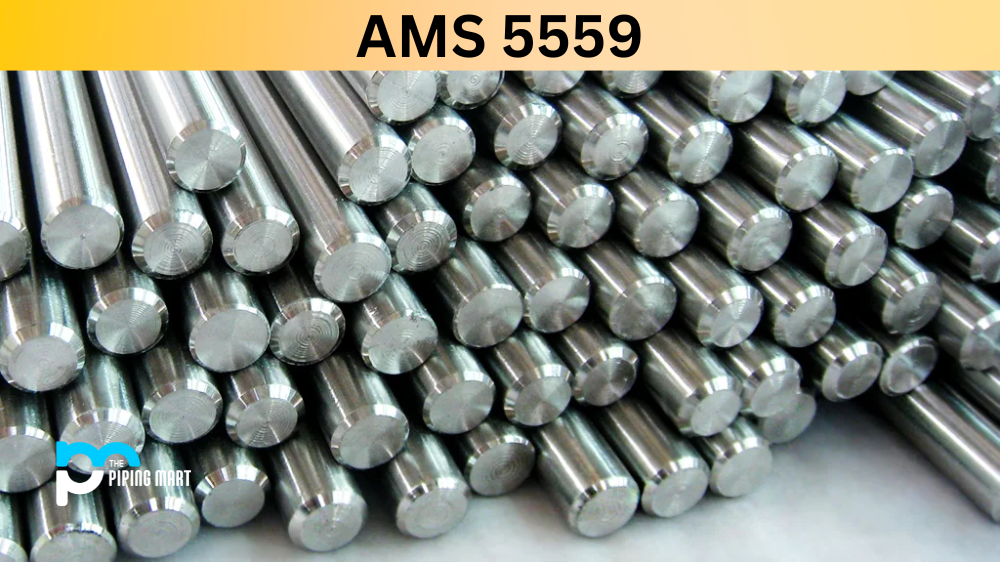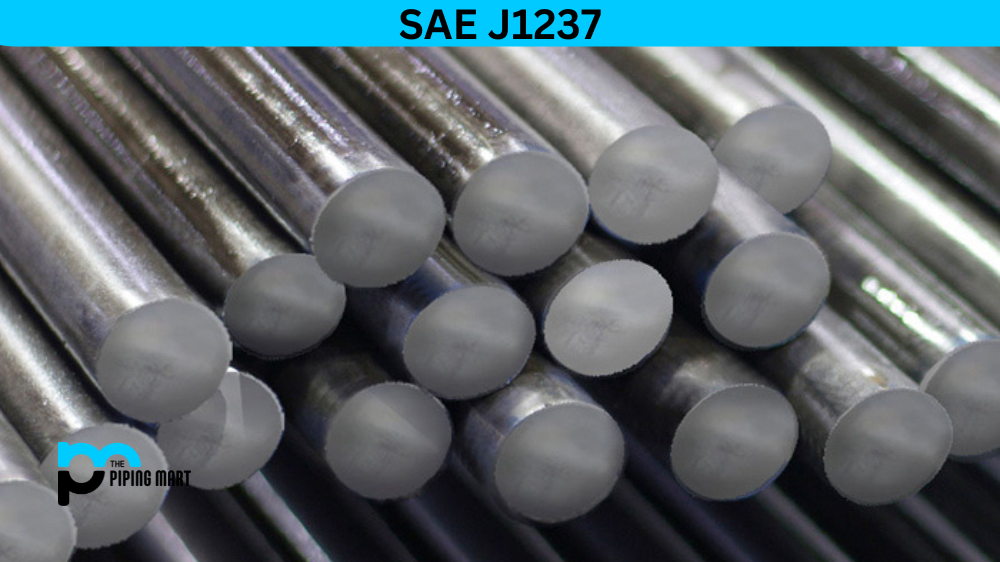AMS 5559, a high-performance austenitic stainless steel, is a go-to material in various industrial sectors due to its exceptional properties. It is a widely used option in several applications, including aerospace, chemical, petrochemical, and more. Despite its popularity, many still need to learn what AMS 5559 is and its features. This post will explore the composition, physical and mechanical properties, and uses of AMS 5559.
What is AMS 5559?
AMS 5559 (also known as 321 Stainless Steel) is a material specification that defines the requirements for high-temperature, corrosion-resistant stainless steel alloys. These alloys are used in applications with extreme heat and corrosive environments and require materials that can withstand harsh conditions. AMS 5559 specifies the chemical composition, mechanical properties, and other requirements these alloys must meet to be suitable for these demanding applications. Whether you’re designing chemical processing equipment, turbine engines, or other high-performance machinery, understanding the requirements of AMS5559 is critical to ensuring that your materials meet the rigorous demands of the job.
What Form is AMS 5559 Available at Piping Mart?
- Nut
- Bolt
- Pipe Fittings
- Tubing
- Valves
- Flanges
- Channels
- Fasteners
- Electrodes
- Sheet Plates
- Forged Fitting
- Instrumentation Fittings
AMS 5559 Composition
Composed of mostly iron and nickel, AMS 5559 also contains minor elements such as carbon, manganese, and sulfur. Its chromium content is around 20-23%, while its nickel level ranges from 11.5-14.5%. Its low carbon content makes it resistant to sensitization and hence the preferable material for welding.
| Element | AMS 5559 |
| Carbon | 0.08 |
| Chromium | 17.0-19.0 |
| Nickel | 9.0-12.0 |
| Manganese | 2.00 |
| Silicon | 0.75 |
| Nitrogen | 0.10 |
| Phosphorus | 0.045 |
| Sulfur | 0.030 |
| Titanium | 5(C+N) min / 0.70 max |
AMS 5559 Physical Properties
AMS 5559 plate can operate in temperatures of up to 815°C, making it ideal for high-temperature applications. Its density is approximately 7.99g/cm3, similar to 304 and 316 stainless steels. Additionally, the material is magnetic when cold-worked, but it loses its magnetic properties upon annealing.
| Grade | Density (kg/m3) | Elastic Modulus (GPa) | Mean Coefficient of Thermal Expansion (μm/m/°C) | Thermal Conductivity (W/m.K) | Specific Heat 0-100 °C (J/kg.K) | Electrical Resistivity (nΩ.m) | |||
|---|---|---|---|---|---|---|---|---|---|
| 0-100 °C | 0-315 °C | 0-538 °C | at 100 °C | at 500 °C | |||||
| AMS 5559 | 8027 | 193 | 16.6 | 17.2 | 18.6 | 16.1 | 22.2 | 500 | 720 |
AMS 5559 Mechanical Properties
AMS 5559 exhibits excellent mechanical properties, making it reliable for various engineering applications. It has a tensile strength of approximately 100 ksi (515 MPa), higher than the 300-series stainless steel. Its modulus of elasticity is around 28.8 million psi, making it relatively stiff. It has a good toughness property, enabling it to withstand extreme environmental conditions.
| DESCRIPTION | AMS 5570 |
|---|---|
| Proof Stress 0.2% (MPa) | 205 |
| Tensile strength (MPa) | 515 |
| Elongation A5 (%) | 40 |
| Hardness | HB: 217 HRB: 95 |
AMS 5559 Equivalents
| Grade | UNS No | Old British | Euronorm | Swedish SS | Japanese JIS | ||
|---|---|---|---|---|---|---|---|
| BS | En | No | Name | ||||
| AMS 5559 | S32100 | 321S31 | 58B, 58C | 1.4541 | X6CrNiTi18-10 | 2337 | SUS 321 |
AMS 5559 Uses
AMS 5559 welding wire is used in various industries, including aerospace, nuclear engineering, and chemical processing, owing to its physical and mechanical properties. It is often used in aircraft exhaust systems, furnace parts, heat exchangers in nuclear facilities, and chemical processing plants. Due to its high-temperature resistance and resistance to sulfidation, it is an exceptional alternative to 316L in the chemical processing industry.
AMS 5559 Hardness
AMS 5559 material can be hardened by cold working. Its hardness is measured using the Rockwell scale. The hardness of AMS 5559 in the annealed condition is 80 HRB, while it ranges between 95-100 HRB in the cold-worked condition. The high hardness in the cold-worked condition results from the reduction in ductility and the scattering of dislocations.
AMS 5559 Heat Treatment
AMS 5559 is a non-hardenable material. Therefore, heat treatment only improves its creep resistance and annealing properties. Annealing is the preferred treatment, as it restores the corrosion resistance and flexibility of the material. The recommended annealing temperature for AMS 5559 is between 1010-1120°C.
Conclusion
AMS 5559 is an excellent material that serves various industrial applications. Its exceptional physical and mechanical properties make it a reliable alternative to 316L stainless steel in high-temperature and high-corrosion operating conditions. Familiarizing yourself with the composition, physical and mechanical properties uses, and heat treatment of AMS 5559 will help you optimize your production process and maximize your material investment.

Meet Bhavesh, a seasoned blogger with a wealth of knowledge and experience. From metal products manufacturing to retail, Bhavesh has a diverse background in various industries and is dedicated to sharing his insights and expertise with readers.




